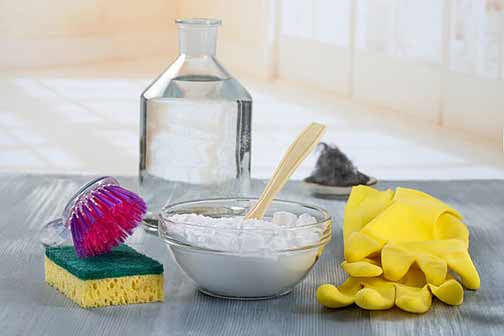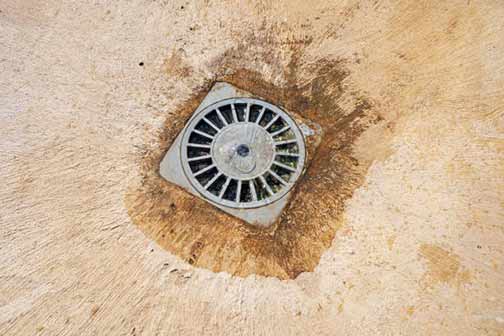Understanding the Common Causes of Clogged Floor Drains
Floor drains are an essential part of any home or commercial plumbing system, designed to remove water efficiently from various areas such as basements, garages, and laundry rooms. However, these drains can become clogged due to a variety of reasons, leading to inconvenient and potentially hazardous situations.
One common cause of clogged floor drains is the accumulation of debris such as dirt, hair, and small objects that inadvertently make their way down the drain. Over time, these substances can build up and obstruct the flow of water. Another significant cause is the presence of grease and oil, which can solidify and create a blockage. Additionally, environmental factors such as tree roots penetrating the drain pipes can lead to clogs and hinder the drainage process.
Understanding these common causes is the first step towards effectively managing and preventing clogged floor drains. By being aware of what typically leads to blockages, you can take proactive measures to keep your drains clear and functioning smoothly.
Preventative Measures to Keep Your Floor Drains Clear
Prevention is always better than cure, and this adage holds true for maintaining clear floor drains. Implementing preventative measures can save you time, effort, and money in the long run. Here are some effective strategies to keep your floor drains free of clogs.
Firstly, it is essential to practice regular cleaning and maintenance. Periodically flush your floor drains with hot water to dissolve any grease or oil that may have accumulated. You can also use a mixture of vinegar and baking soda to break down any organic matter and keep the drain clear.
Installing drain covers or strainers is another valuable preventive measure. These covers act as a barrier, preventing large debris, hair, and other objects from entering the drain and causing blockages. Ensure that you clean these covers regularly to maintain their effectiveness.
Additionally, be mindful of what you allow to go down the drain. Avoid pouring grease, oil, and other viscous substances down floor drains as they can solidify and cause clogs. Dispose of these substances properly by using designated containers. By adopting these preventative measures, you can significantly reduce the likelihood of experiencing clogged floor drains.
Essential Tools and Equipment for Unclogging Floor Drains
Having the right tools and equipment at your disposal is crucial when it comes to unclogging floor drains. These tools can help you tackle blockages effectively and efficiently, ensuring that your drains remain clear and functional.
A plunger is a basic yet essential tool for unclogging floor drains. This tool works by creating a vacuum and dislodging the blockage through pressure. Ensure that you have a plunger specifically designed for floor drains, as they have a larger cup compared to sink plungers.
An auger or drain snake is another indispensable tool for dealing with stubborn clogs. A drain snake consists of a long, flexible cable that can reach deep into the drain to break up and remove blockages. Manual and motorized versions are available, and having one allows you to address more severe clogs effectively.
Additionally, a wet/dry vacuum can be useful for removing standing water and debris from the floor drain. This type of vacuum is designed to handle both wet and dry materials, making it a versatile tool for maintaining clear drains.
For grease and oil-related clogs, enzyme-based drain cleaners are highly effective. These cleaners contain natural enzymes that break down organic matter and grease, preventing clogs from forming. Keep in mind that chemical-based drain cleaners can be harsh and may damage your plumbing, so it is advisable to opt for enzyme-based alternatives.
By having these essential tools and equipment at hand, you can efficiently address and unclog floor drains whenever the need arises.

DIY Methods to Unclog Floor Drains
There are several do-it-yourself (DIY) methods you can employ to unclog floor drains effectively. These methods are cost-effective and can be accomplished using common household items.
One of the simplest DIY methods is using hot water to dissolve clogs. Boil a kettle of water and carefully pour it down the floor drain in stages. The heat can help dissolve grease and other organic matter causing the blockage. Repeat this process a few times to ensure the clog is completely cleared.
An alternative method is using a vinegar and baking soda mixture. Start by pouring a cup of baking soda into the drain, followed by a cup of vinegar. Allow the mixture to sit for about 15-20 minutes, then flush the drain with hot water. The chemical reaction between vinegar and baking soda helps break down clogs and clear the drain.
If you have a plunger and the clog is not too severe, you can use it to create pressure and dislodge the blockage. Place the plunger over the drain and rapidly pump it up and down to create suction. This action can help move the obstruction and restore proper drainage.
For more stubborn clogs, a drain snake can be employed. Insert the drain snake into the drain and rotate it clockwise to break up the blockage. Once you feel the resistance lessen, retract the snake and remove any debris that has been dislodged. Repeat the process if necessary until the drain flows freely.
By utilizing these DIY methods, you can tackle clogged floor drains effectively without the need for professional assistance. However, if the clog persists or recurs frequently, it may be time to seek the help of a plumber.
When to Call a Professional Plumber
While DIY methods can be effective for addressing minor clogs, there are instances where professional assistance is necessary. Knowing when to call a local plumber can save you from potential damage and ensure that your floor drains are restored to optimal functioning.
If you have attempted multiple DIY methods without success, it is an indication that the clog may be more severe or located deeper within the plumbing system. In such cases, a professional plumber has the expertise and specialized equipment to diagnose and resolve the issue effectively.
Another sign that it is time to call a plumber is persistent or recurring clogs. If you find that your floor drains frequently become clogged, it may be indicative of an underlying problem such as pipe damage, tree root infiltration, or improper drain installation. A plumber can conduct a thorough sewer camera inspection and provide a long-term solution to prevent future clogs.
Additionally, if you notice foul odors emanating from the floor drain, it could be a sign of a more extensive blockage or a problem with the sewer line. A professional plumber can assess the situation and take appropriate measures to eliminate the odor and address any underlying issues.
Lastly, if you experience water backup or flooding around the drain area, it is crucial to seek professional assistance immediately. Water damage can lead to costly repairs and pose health risks due to mold and mildew growth. A plumber can quickly identify the cause of the backup and take the necessary steps to prevent further damage.
By recognizing these signs and knowing when to call a professional plumber, you can ensure that your floor drains are properly maintained and any issues are resolved promptly and efficiently.
Maintaining Your Floor Drains for Long-term Efficiency
Proper maintenance is key to ensuring the long-term efficiency of your floor drains. By adopting a proactive approach and implementing regular maintenance practices, you can prevent clogs and keep your drains functioning optimally.
One important aspect of maintenance is regular cleaning. Make it a habit to clean your floor drains periodically by flushing them with hot water and using a vinegar and baking soda mixture. This helps break down any buildup and keeps the drain clear. Additionally, remove and clean drain covers or strainers to prevent debris from entering the drain.
Inspect your floor drains regularly for any signs of damage or blockage. Look for cracks, leaks, or water pooling around the drain area, as these may indicate underlying issues. Address any problems promptly to prevent further damage and maintain efficient drainage.
Consider scheduling professional inspections and maintenance at least once a year. A professional plumber can conduct a thorough assessment of your plumbing system, identify potential issues, and perform necessary maintenance tasks. This proactive approach can help catch and resolve problems early on, preventing costly repairs in the future.
Educating household members or employees about proper drain usage is also crucial. Communicate the importance of avoiding the disposal of grease, oil, food particles, and other substances down floor drains. Encourage the use of designated containers for disposing of these materials and provide clear instructions on maintaining drain covers and strainers.
By implementing these maintenance practices, you can ensure that your floor drains remain efficient and free of clogs for the long term. Proper maintenance not only extends the lifespan of your plumbing system but also minimizes the risk of disruptions and costly repairs.


